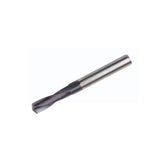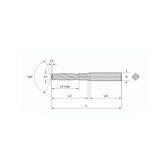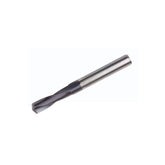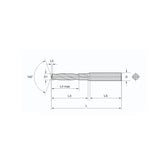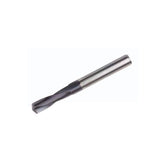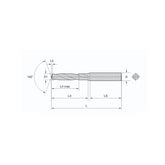Detailed Introduction to the Application of Carbide Drill Bits
Application of Carbide Drill Bits
Comprehensive guide to structure, applications, and maintenance of high-performance carbide drilling solutions
I. Structure and Design of Hard Alloy Drill Bits
Drill Bit Structure
- Cutting Edge: Designed for material removal; shape and angles adjustable based on machining requirements
- Flute: Facilitates chip evacuation, reduces chip accumulation, and improves machining efficiency
- Shank: Connects to drill chucks or machine tools, commonly in straight or taper shank configurations
Design Features
- High Precision: Solid carbide drills maintain tight dimensional tolerances for accurate hole machining
- Optimized Geometry: Enhanced cutting edge and flute designs improve cutting efficiency and surface finish

Advanced carbide drill bit design with optimized cutting geometry
II. Application Fields
-
Aerospace
Machining high-strength materials like titanium/aluminum alloys. Ideal for precision drilling requirements in critical components.
Titanium Alloys Engine Components High-Strength Parts -
Automotive Manufacturing
Processing engine blocks, transmission housings. High-efficiency demands drive widespread adoption in production lines.
Engine Blocks Transmission Systems High-Speed Drilling -
Machinery Manufacturing
General part machining (molds, machine components). Brazed and indexable drills are common types for varied applications.
Mold Making Precision Components Heavy Equipment -
Construction & Infrastructure
Superior performance in concrete/stone drilling. Coated variants significantly resist material abrasion in demanding environments.
Concrete Drilling Stone Cutting Demolition Work
III. Usage and Maintenance
- Tool Selection: Match drill type/size to material and process requirements. Consider coating options for specific materials.
- Cutting Parameters: Optimize speed, feed rate, and depth-of-cut to prevent premature wear and ensure efficient operation.
- Cooling & Lubrication: Employ cutting fluids to reduce thermal impact on tools and extend tool life.
- Regular Inspection: Monitor for wear patterns and replace tools before failure to maintain quality and prevent damage.
- Proper Storage: Store drill bits in protective cases to prevent chipping and damage to cutting edges.
IV. Development Trends
- Advanced Coatings: Nano-coatings enhance wear/heat resistance, extending tool life by up to 300% in demanding applications.
- Digitalization & AI: CNC integration enables micron-level precision. Smart systems monitor wear in real-time and optimize parameters.
- Hybrid Materials: Development of composite carbide grades that balance hardness and toughness for specific applications.
- Custom Geometry: Application-specific flute designs and point angles optimized for chip evacuation and material properties.
- Sustainable Manufacturing: Focus on recyclable materials and processes that reduce environmental impact.
V. Purchasing Guidelines
- Brand Selection: Prioritize established manufacturers (domestic/international) for consistent quality and reliable technical support.
- Performance Matching: Select appropriate coatings/types for specific materials - TiN for general use, AlTiN for high-temperature applications.
- Cost Efficiency: Evaluate tool life vs. productivity - premium bits often deliver better ROI despite higher initial cost.
- Technical Support: Choose suppliers offering application engineering support and troubleshooting resources.
- Certification: Look for ISO-certified manufacturers ensuring quality control and standardized production processes.
ISO 9001 Certified Quality Control Technical Support
Tags:
